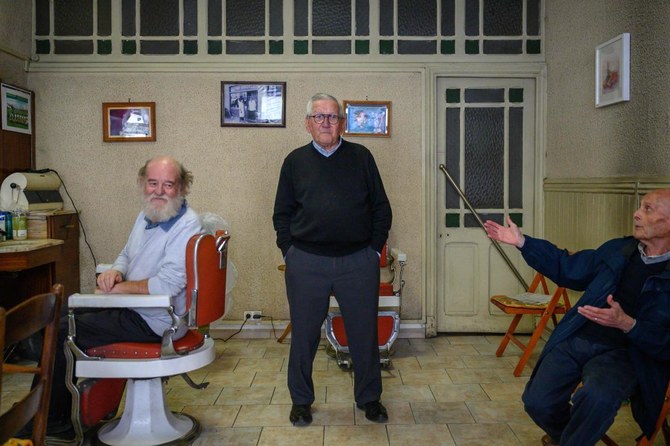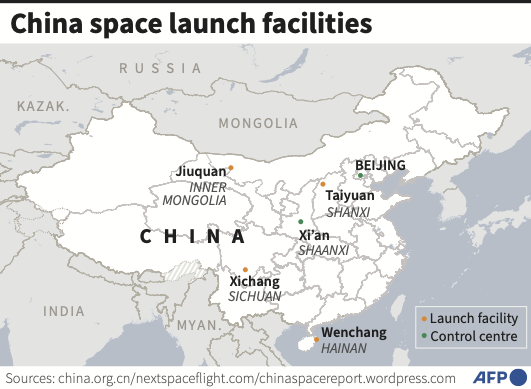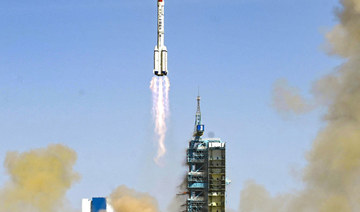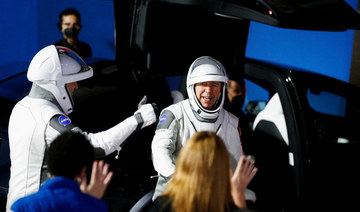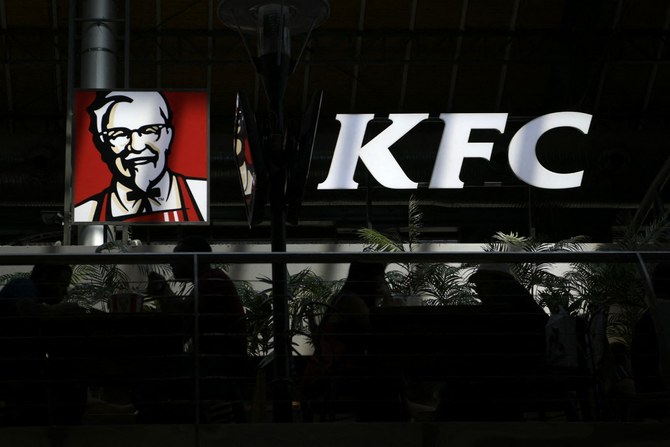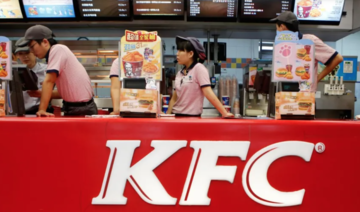TOKYO: Toyota’s Japan Taxi, born in a government committee and designed to be an all-things-to-all-people cab, has become a high-priced icon of Tokyo’s budget-busting 2020 Olympic and Paralympic Games.
Launched in 2017, the indigo car is the realization of a government project to put a taxi on Japan’s roads that could carry wheelchair users, luggage-laden travelers and foreign visitors of all sizes.
It includes a wheelchair ramp, heated seats, smartphone chargers, an array of anti-collision sensors and even virus-killing air conditioning. But the liquefied petroleum gas-hybrid taxi doesn’t come cheap, selling for $31,786.40 (¥3.5 million) — almost a third more than the Crown model it replaces.
“We wanted to build something that tried to please as many people as possible,” Hiroshi Kayukawa, the chief engineer who oversaw Japan Taxi’s development, told Reuters at Toyota’s headquarters in Toyota City.
The effort has not been without some wrong turns. Many drivers complained that the Japan Taxi wheelchair ramp was awkward and took too long to deploy. Operators worry about costs after transport ministry subsidies expire.
And the taxi’s complex design — conceived by a Transport Ministry committee with representatives from carmakers, taxi companies and advocates for the disabled — has scuttled at least one attempt to export it.
“I would give it 70 out of 100,” said Hiroaki Kaneko, a 20-year veteran driver for Hinomaru Kotsu, one of Tokyo’s leading taxi companies. “As a universal taxi I would give it 50.”
Although it wasn’t built with the 2020 games in mind, Toyota rolls it off the line with Olympics and Paralympic logos plastered on each side.
The carmaker hopes that Olympic sheen will help it replace a third of Tokyo’s 30,000 taxis before the Games. The event, which starts in July 2020, is expected to cost more than twice the initial estimate of ¥734 billion.
“We thought the Olympics would be a good way to increase the appeal of the car. We want to get it adopted as quickly as possible,” Kayukawa said.
A rush of pre-Olympic orders for the cab is helping Toyota generate sales for what the company says is a money-losing project.
Only 2,000 Japan Taxis are built each month, far below the number Toyota would normally consider viable, and a small fraction of the 28,000 cars the company produces every day globally.
A spokesman said the company’s rationale for the project was not profit, but “to contribute to the creation of a rich society by supporting the movement of many people with taxis.”
Government subsidies are giving taxi firms incentives to buy the vehicles.
Hinomaru Kotsu has already replaced half of its 620 taxis. By September two-thirds of the fleet will be Japan Taxis, said Satoshi Touma, who is in charge of vehicle management.
Hinomaru, like other operators, gets a transport ministry universal taxi payment and an eco-friendly vehicle subsidy from the Tokyo Metropolitan government. Combined, they cover most of the taxi’s extra cost, Touma said.
But those subsidies “will disappear once the Olympics end,” Touma added.
Overseas, Japan Taxi’s unsubsidized price tag dissuaded Chinese ride-hailing giant Didi Chuxing, according to a Toyota executive who spoke to Reuters.
Didi, which “loved the fact that you can carry your small suitcase right on” and other purpose-designed features, asked Toyota about the taxi last year, the source said. But it decided it was too difficult to pare back the design and reduce costs, said the executive, who was not authorized to speak to the media and requested anonymity.
Toyota and Japanese officials have promoted Japan Taxi as providing accessibility for disabled travelers in Japan for the Paralympics.
On a rainy day in March, the Japan National Tourism Organization deployed two taxis to take US Paralympian Daniel Romanchuk and Canadian-born Josh Grisdale, a disabled tourism promoter, on a trip around Tokyo.
Romanchuk, who had just competed in the Tokyo Marathon, usually stows his wheelchair in the trunk when he takes a taxi, said his mother, Kim. The Japan Taxi allowed him to roll his wheelchair inside, but he had to wait in the rain as the driver attached the foldable ramp.
Grisdale, who uses a taller, bulkier electric wheelchair that is hard to fit in the Japan Taxi, traveled in a specialized van instead.
“It’s hard to find a one-stop solution; there are so many variables,” Romanchuk’s mother said.
The tricky ramp dented the taxi’s user-friendly image, and Kayukawa’s team redesigned it after drivers complained it was tricky to deploy.
“We probably over-engineered it,” he said.
His engineers had assumed the ramp would rarely be used, and decided it could be stashed in the trunk. They didn’t invite drivers to test it before production began, Kayukawa added.
The new, larger ramp is now stored under the rear passenger seat.
Hinomaru likes its Japan Taxis because they consume half the fuel of older vehicles and their anti-collision sensors have reduced accidents by 10 percent.
That means more profit amid worries about competitors such as Didi Chuxing and Uber Technologies, which is partnering with Toyota to develop car-sharing services.
Toyota made other tweaks when it addressed the wheelchair ramp problem. It also made the automatic sliding passenger door close 1.5 seconds faster, reduced rear windscreen wiper noise with an intermittent setting and lowered the money tray on the driver’s seat to reduce shoulder strain.
When the Olympics are over, Kaneko and Touma would like Toyota to make other changes, including a more spacious trunk, a bigger fuel tank and passenger windows that open.
The Ministry of Transport, Land and Infrastructure says there is more work to be done on the universal taxi project.
“We would like to a see another vehicle that fills a gap between Japan Taxi and more specialized wheelchair carriers,” automotive section official Daisuke Kakuya said.












